What’s a Chakra? Part 2
Part 2 of Marla Hoover’s article on Chakras examines each of the seven chakras in detail, including:
- the symbol for each chakra (includes pictures)
- the endocrine gland for each chakra
- the mental and emotional characteristics of each chakra
- the spiritual qualities of each chakra
What’s a Chakra?
Marla Hoover – PVNN
Each Chakra is associated with a certain color and are also visualized as lotuses/flowers with at different number of petals or segments in every chakra. The are as follows:
Sahasrara: The Crown Chakra
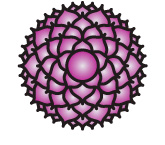 Sahasara is generally considered to be the chakra of pure consciousness. Its role may be envisioned somewhat similarly to that of the pituitary gland, which secretes hormones to communicate to the rest of the endocrine system and also connects to the central nervous system via the hypothalamus. The thalamus is thought to have a key role in the physical basis of consciousness. Symbolized by a lotus with one thousand petals, it is located at the crown of the head. Sahasrara is represented by the color violet and it involves such issues as inner wisdom and the death of the body. Sahasrara’s inner aspect deals with the release of karma, physical action with meditation, mental action with universal consciousness and unity, and emotional action with “beingness”.
Sahasara is generally considered to be the chakra of pure consciousness. Its role may be envisioned somewhat similarly to that of the pituitary gland, which secretes hormones to communicate to the rest of the endocrine system and also connects to the central nervous system via the hypothalamus. The thalamus is thought to have a key role in the physical basis of consciousness. Symbolized by a lotus with one thousand petals, it is located at the crown of the head. Sahasrara is represented by the color violet and it involves such issues as inner wisdom and the death of the body. Sahasrara’s inner aspect deals with the release of karma, physical action with meditation, mental action with universal consciousness and unity, and emotional action with “beingness”.
Ajna: The Brow Chakra
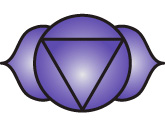 Ajna (along with Bindu, also known as the third eye chakra) is linked to the pineal gland which may inform a model of its envisioning. The pineal gland is a light sensitive gland that produces the hormone melatonin which regulates sleep and awakening. Ajna is symbolized by a lotus with two petals, and corresponds to the color white, indigo or deep blue. Ajna’s key issues involve balancing the higher & lower selves and trusting inner guidance. Ajna’s inner aspect relates to the access of intuition. Emotionally, Ajna deals with clarity on an intuitive level. (Note: some opine that the pineal and pituitary glands should be exchanged in their relationship to the Crown and Brow chakras, based on the description in Arthur Avalon’s book on kundalini called Serpent Power or empirical research.)
Ajna (along with Bindu, also known as the third eye chakra) is linked to the pineal gland which may inform a model of its envisioning. The pineal gland is a light sensitive gland that produces the hormone melatonin which regulates sleep and awakening. Ajna is symbolized by a lotus with two petals, and corresponds to the color white, indigo or deep blue. Ajna’s key issues involve balancing the higher & lower selves and trusting inner guidance. Ajna’s inner aspect relates to the access of intuition. Emotionally, Ajna deals with clarity on an intuitive level. (Note: some opine that the pineal and pituitary glands should be exchanged in their relationship to the Crown and Brow chakras, based on the description in Arthur Avalon’s book on kundalini called Serpent Power or empirical research.)
Vishuddha: The Throat Chakra
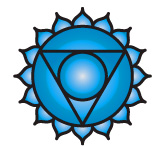 Vishuddha (also Vishuddhi) may be understood as relating to communication and growth through expression. This chakra is paralleled to the thyroid, a gland that is also in the throat and which produces thyroid hormone, responsible for growth and maturation. Symbolized by a lotus with sixteen petals. Vishudda is characterized by the color light or pale blue, or turquoise. It governs such issues as self-expression and communication. Physically, Vishuddha governs communication, emotionally it governs independence, mentally it governs fluent thought, and spiritually, it governs a sense of security.
Vishuddha (also Vishuddhi) may be understood as relating to communication and growth through expression. This chakra is paralleled to the thyroid, a gland that is also in the throat and which produces thyroid hormone, responsible for growth and maturation. Symbolized by a lotus with sixteen petals. Vishudda is characterized by the color light or pale blue, or turquoise. It governs such issues as self-expression and communication. Physically, Vishuddha governs communication, emotionally it governs independence, mentally it governs fluent thought, and spiritually, it governs a sense of security.
Anahata: The Heart Chakra
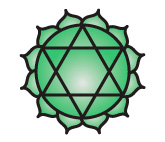 Anahata or Anahata-puri, or padma-sundara is related to the, thymus, located in the chest. The thymus is an element of the immune system as well as being part of the endocrine system. It produces the T cells responsible for fending off disease and may be adversely affected by stress.. Anahata is symbolized by a lotus flower with twelve petals. Anahata is related to the colors green or pink. Key issues involving Anahata involve complex emotions, compassion, tenderness, unconditional love, equilibrium, rejection and well being. Physically Anahata governs circulation, emotionally it governs unconditional love for the self and others, mentally it governs passion, and spiritually it governs devotion.
Anahata or Anahata-puri, or padma-sundara is related to the, thymus, located in the chest. The thymus is an element of the immune system as well as being part of the endocrine system. It produces the T cells responsible for fending off disease and may be adversely affected by stress.. Anahata is symbolized by a lotus flower with twelve petals. Anahata is related to the colors green or pink. Key issues involving Anahata involve complex emotions, compassion, tenderness, unconditional love, equilibrium, rejection and well being. Physically Anahata governs circulation, emotionally it governs unconditional love for the self and others, mentally it governs passion, and spiritually it governs devotion.
Manipura: The Solar Plexus Chakra
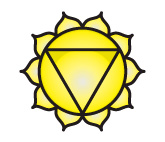 Mainpura or manipuraka is related to the metabolic and digestive systems. Manipura is believed to correspond to Islets of Langerhans, which are groups of cells in the pancreas, as well as the outer adrenal glands and the adrenal cortex. These play a valuable role in digestion, the conversion of food matter into energy for the body. Symbolized by a lotus with ten petals. The color that corresponds to Manipura is yellow. Key issues governed by Manipura are issues of personal power, fear, anxiety, opinion-formation, introversion, and transition from simple or base emotions to complex. Physically, Manipura governs digestion, mentally it governs personal power, emotionally it governs expansiveness, and spiritually, all matters of growth.
Mainpura or manipuraka is related to the metabolic and digestive systems. Manipura is believed to correspond to Islets of Langerhans, which are groups of cells in the pancreas, as well as the outer adrenal glands and the adrenal cortex. These play a valuable role in digestion, the conversion of food matter into energy for the body. Symbolized by a lotus with ten petals. The color that corresponds to Manipura is yellow. Key issues governed by Manipura are issues of personal power, fear, anxiety, opinion-formation, introversion, and transition from simple or base emotions to complex. Physically, Manipura governs digestion, mentally it governs personal power, emotionally it governs expansiveness, and spiritually, all matters of growth.
Svadisthana: The Sacral Chakra
 Swadhisthana, Svadisthana or adhishthana is located in the sacrum (hence the name) and is considered to correspond to the testes or the ovaries that produce the various sex hormones involved in the reproductive cycle. Svadisthana is also considered to be related to, more generally, the genitourinary system and the adrenals. The Sacral Chakra is symbolized by a lotus with six petals, and corresponds to the color orange. The key issues involving Svadisthana are relationships, violence, addictions, basic emotional needs, and pleasure. Physically, Svadisthana governs reproduction, mentally it governs creativity, emotionally it governs joy, and spiritually it governs enthusiasm.
Swadhisthana, Svadisthana or adhishthana is located in the sacrum (hence the name) and is considered to correspond to the testes or the ovaries that produce the various sex hormones involved in the reproductive cycle. Svadisthana is also considered to be related to, more generally, the genitourinary system and the adrenals. The Sacral Chakra is symbolized by a lotus with six petals, and corresponds to the color orange. The key issues involving Svadisthana are relationships, violence, addictions, basic emotional needs, and pleasure. Physically, Svadisthana governs reproduction, mentally it governs creativity, emotionally it governs joy, and spiritually it governs enthusiasm.
Muladhara: The Base Chakra
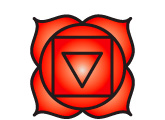 Muladhara or root chakra is related to instinct, security, survival and also to basic human potentiality. This centre is located in the region between the genitals and the anus. Although no endocrine organ is placed here, it is said to relate to the gonads and the adrenal medulla, responsible for the fight and flight response when survival is under threat. There is a muscle located in this region that controls ejaculation in the sexual act of the human male. A parallel is charted between the sperm cell and the ovum where the genetic code lies coiled and the kundalini. Muladhara is symbolized by a lotus with four petals and the color red. Key issues involve sexuality, lust and obsession. Physically, Muladhara governs sexuality, mentally it governs stability, emotionally it governs sensuality, and spiritually it governs a sense of security.
Muladhara or root chakra is related to instinct, security, survival and also to basic human potentiality. This centre is located in the region between the genitals and the anus. Although no endocrine organ is placed here, it is said to relate to the gonads and the adrenal medulla, responsible for the fight and flight response when survival is under threat. There is a muscle located in this region that controls ejaculation in the sexual act of the human male. A parallel is charted between the sperm cell and the ovum where the genetic code lies coiled and the kundalini. Muladhara is symbolized by a lotus with four petals and the color red. Key issues involve sexuality, lust and obsession. Physically, Muladhara governs sexuality, mentally it governs stability, emotionally it governs sensuality, and spiritually it governs a sense of security.
Source: http://www.banderasnews.com/0906/hb-chakra.htm
733 views
Tags: ajna, Anahata, chakra, Manipura, Muladhar, saharsrara, Svadisthana, Vishuddha
This entry was posted on Sunday, January 21st, 2024 at 4:30 pm and is filed under Articles.
You can follow any responses to this entry through the RSS 2.0 feed.
You can leave a response, or trackback from your own site.


















